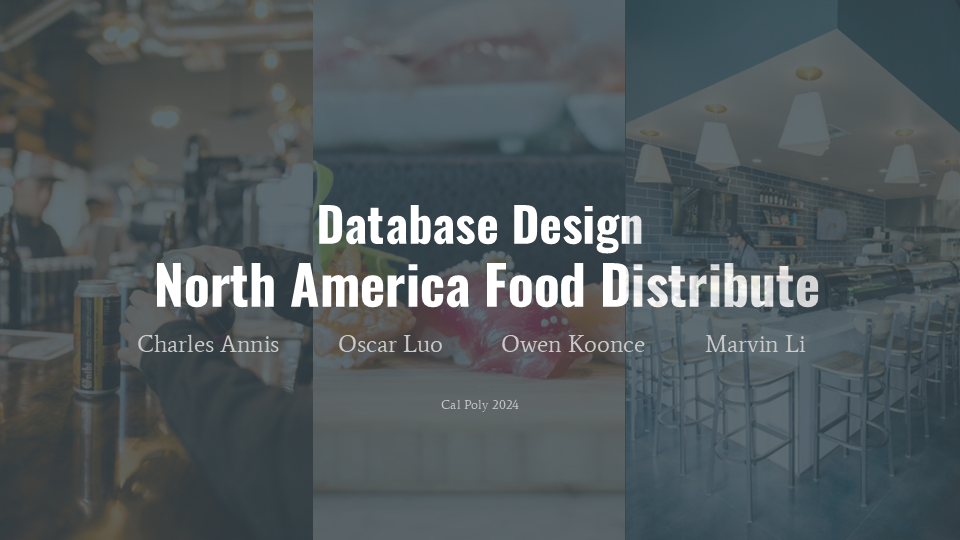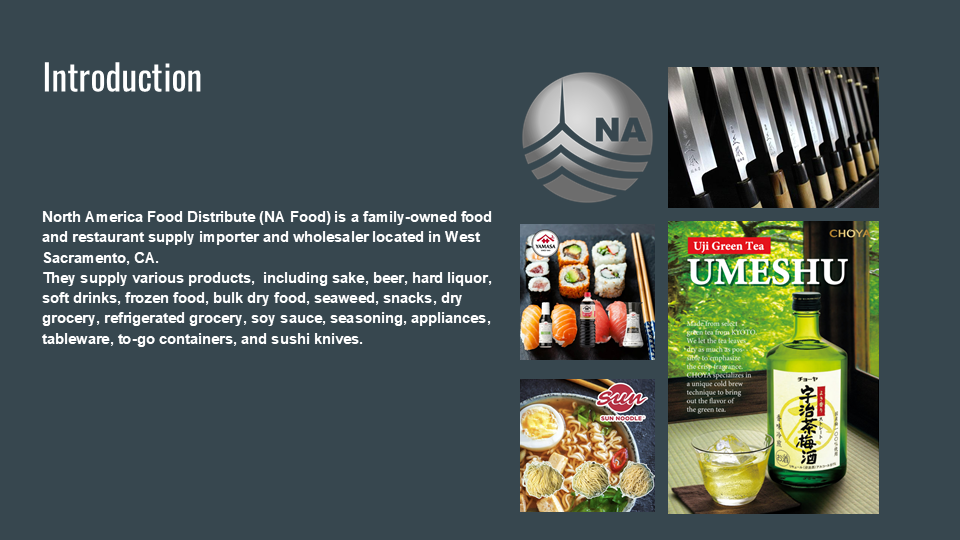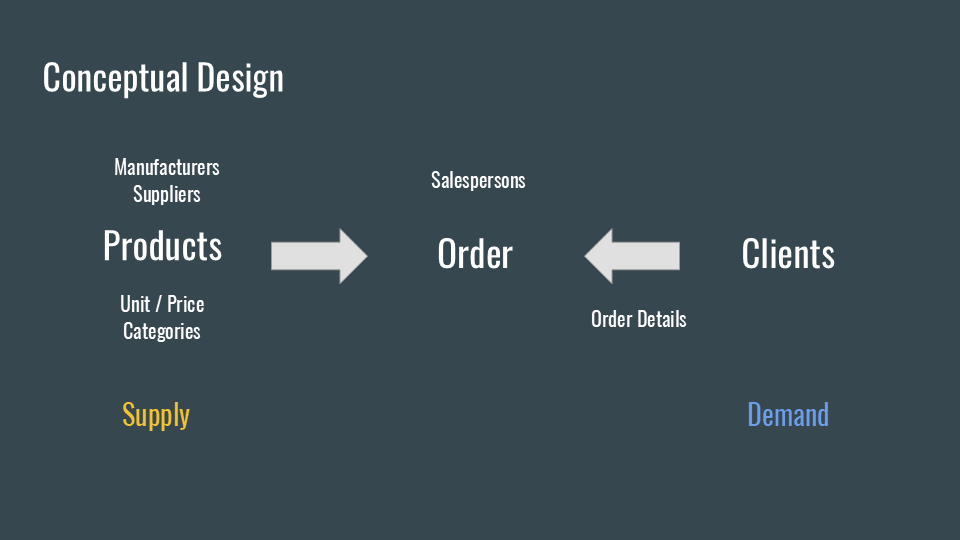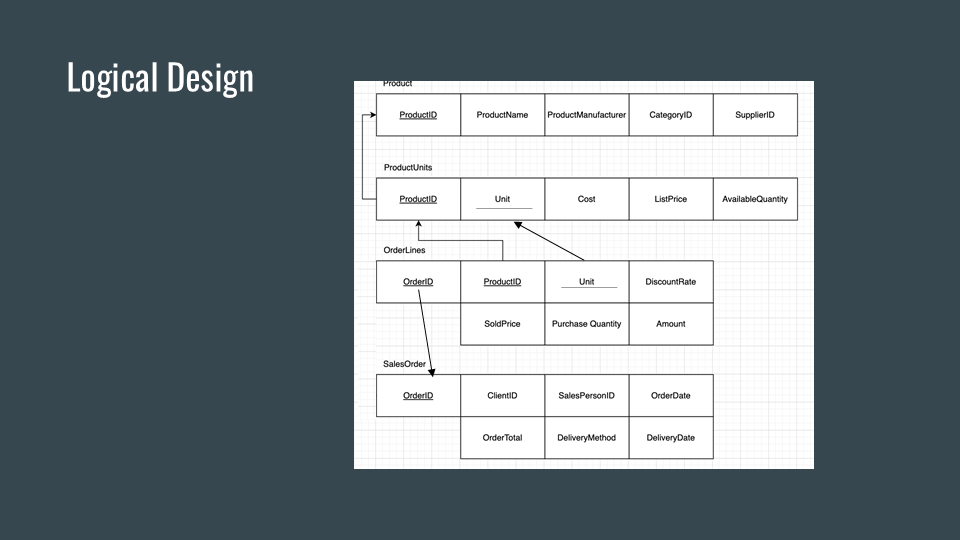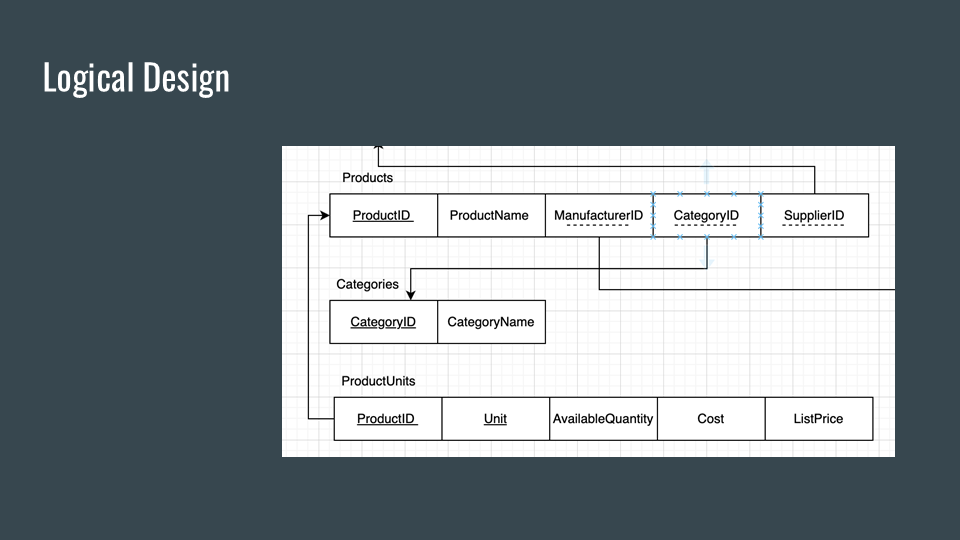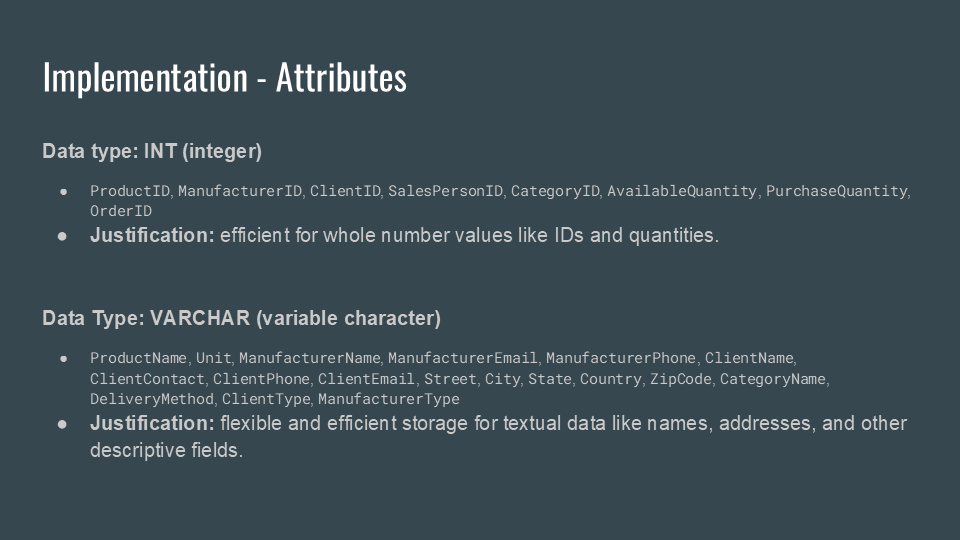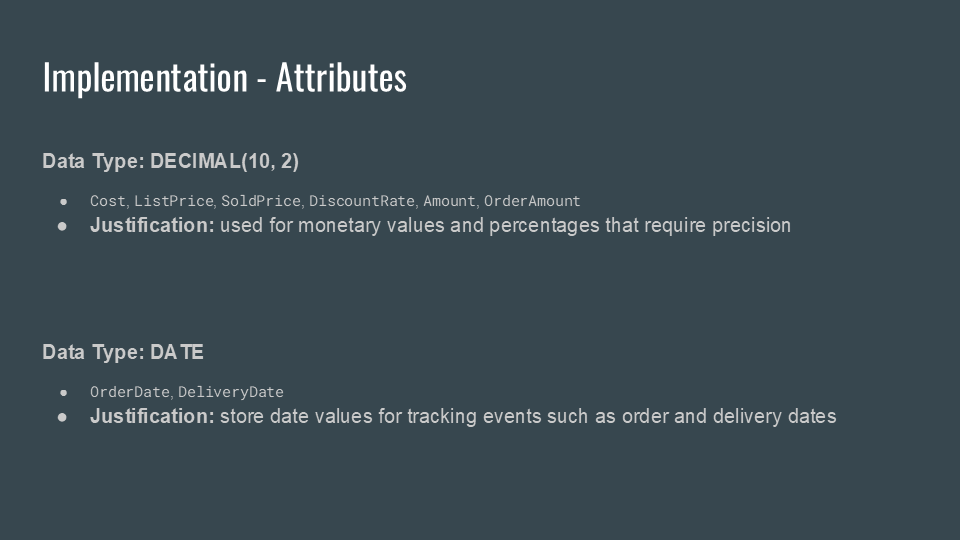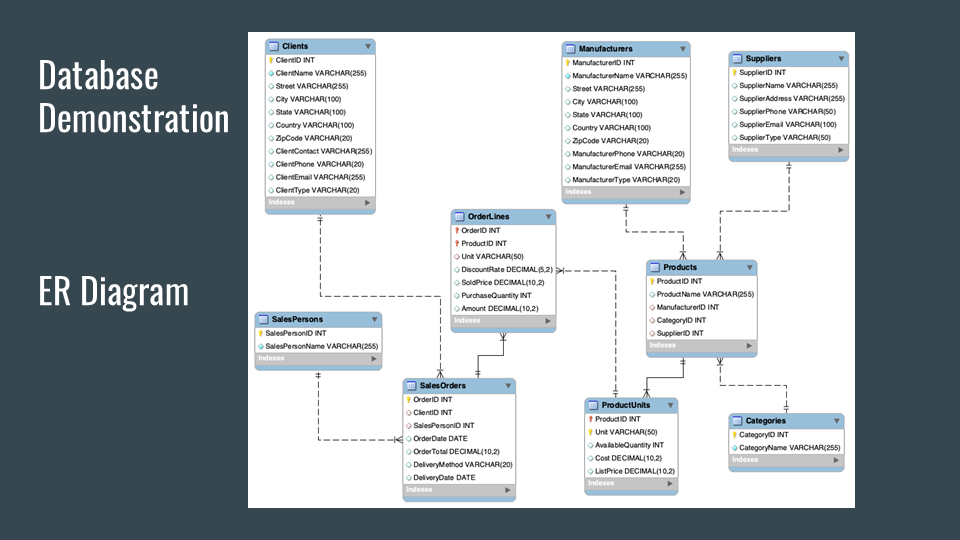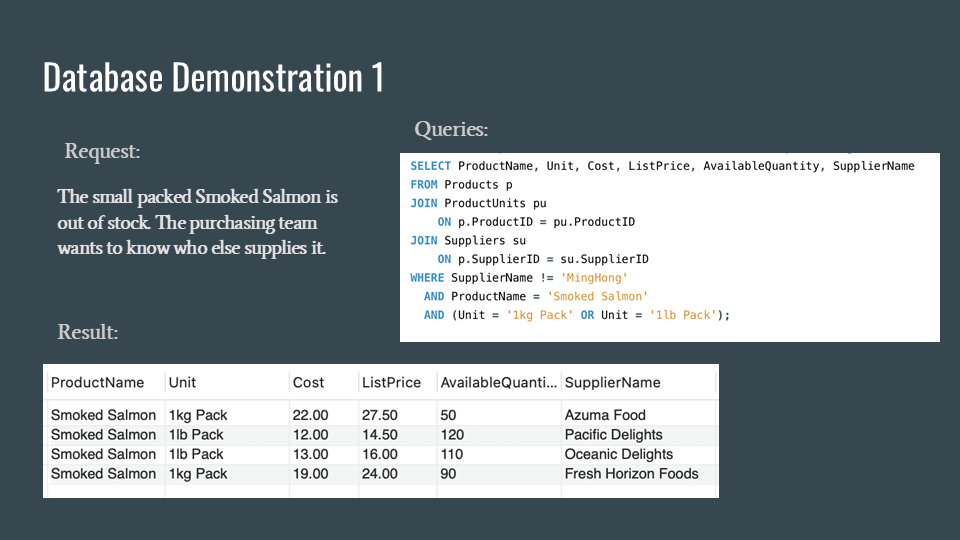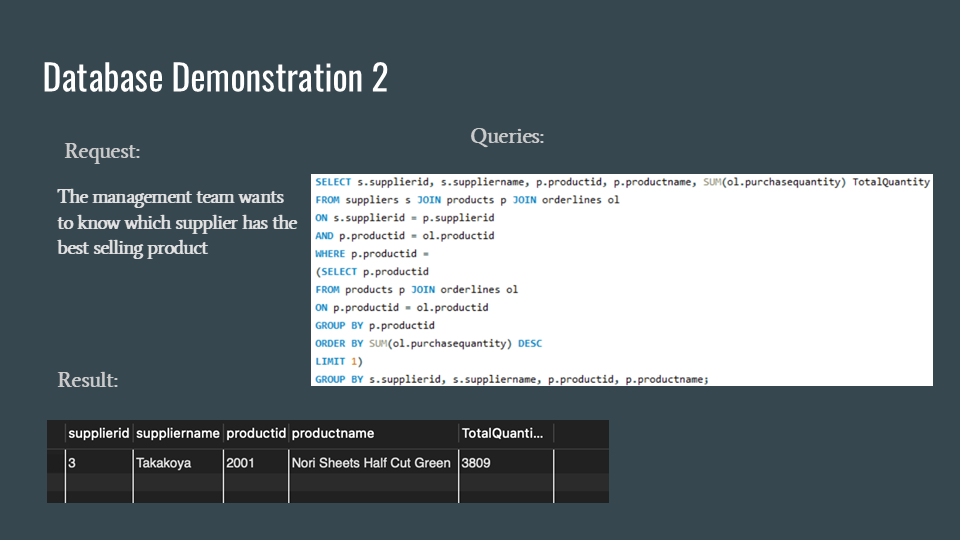Converting Food Data into a SQL Database
For my Data Management class, we were tasked with creating a fully normalized relational database for a real company. My team chose NA Food Distribute, a wholesaler in West Sacramento, because one of our members had inside access to their operations data. We kicked off the project by mapping out the company’s sales and warehouse processes, translating them into an Entity-Relationship (E-R) diagram that captured everything from product categories to supplier relationships and order details.
We then applied normalization—specifically, Third Normal Form (3NF)—to ensure the data was structured logically and without redundancy. With our schema in hand, we used SQL to build tables, define constraints, and populate them with sample records that mirrored NA Food’s real-world data (the SQL script used for this process can be found here). Finally, we tested our design by running queries that answered practical questions, such as which products had the highest discount rates and which sales reps were performing the best. Below, you’ll find the slides from our final presentation, showcasing our methodology, the final database design, and some of the most useful queries.
